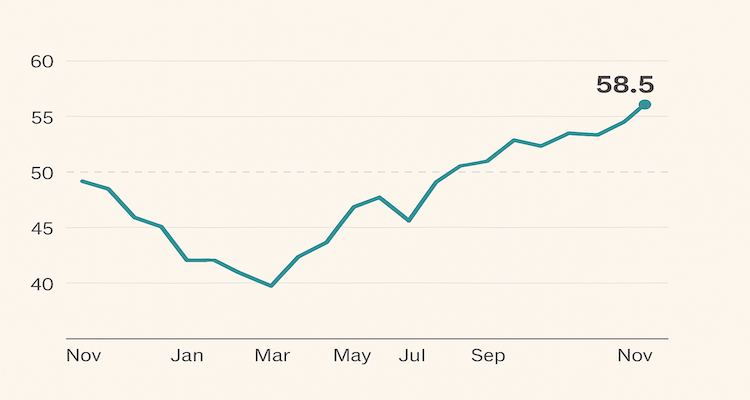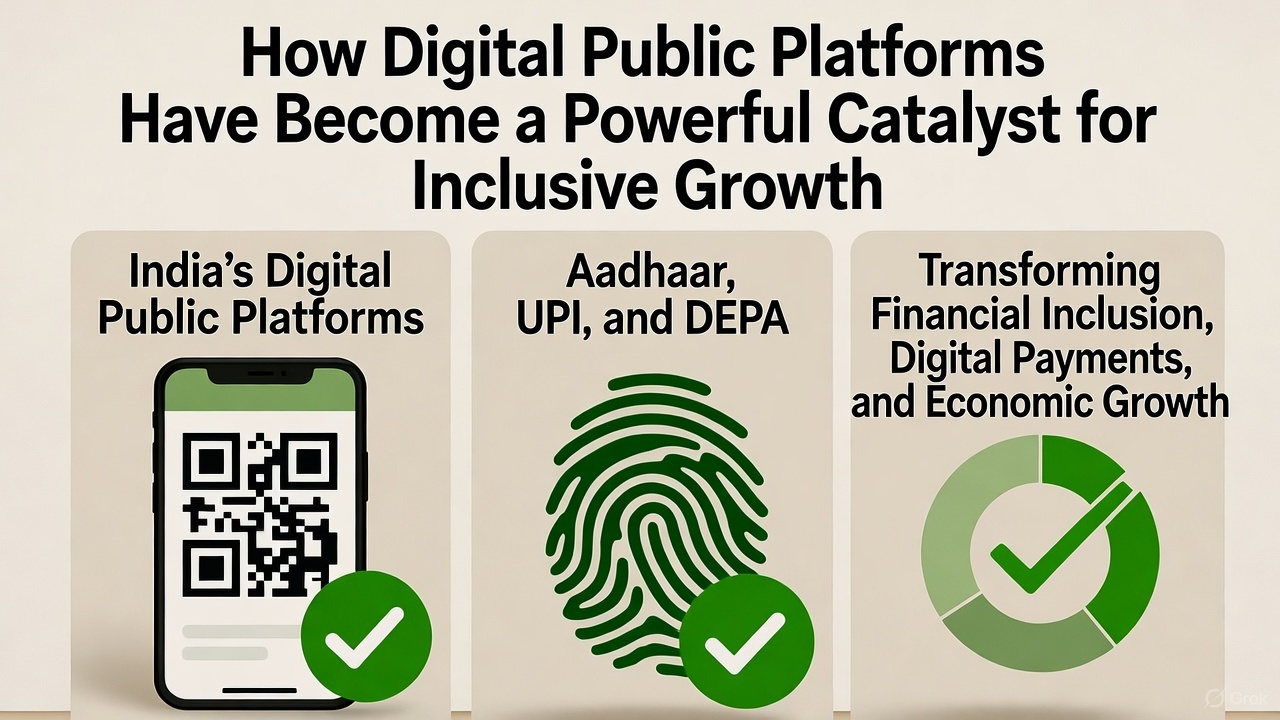How Digital Public Platforms Have Become a Powerful Catalyst for Inclusive Growth
India’s Digital Public Platforms, led by Aadhaar, UPI, and DEPA, are transforming financial inclusion, digital payments, and economic growth through innovation and accessibility.
Introduction: A Digital Revolution Rooted in Inclusion
In just a decade, India has undergone one of the most remarkable digital transformations in the world. What began as a push toward digital payments and identity verification has now evolved into a sophisticated network of interconnected systems — known as Digital Public Platforms (DPPs) — that are redefining financial inclusion and public service delivery. Today, with nearly 85% of India’s digital payment transactions powered by the Unified Payments Interface (UPI), this ecosystem has become a model of how technology can drive equitable growth across a vast and diverse economy.
Context & Background: The Rise of Digital Public Platforms
Digital Public Platforms are more than just technological tools — they represent a new form of digital infrastructure that governments and institutions can build upon to deliver inclusive development. During India’s G20 Presidency, DPPs were formally defined as a set of shared digital systems built upon minimal, modular building blocks accessible to governments, businesses, academia, and civil society alike.
These systems are open, secure, and interoperable, designed to enable seamless access to both public and private services. Their foundation rests on three critical components — digital identity, digital payments, and data exchange. Together, they enable millions to access financial services, social welfare benefits, and business opportunities that were previously out of reach.
Main Developments: India’s Digital Public Infrastructure Ecosystem
India’s Digital Public Platforms ecosystem is a robust, multi-layered framework comprising:
- Aadhaar – Digital Identity:
With over 1.3 billion users, Aadhaar provides a unique, biometric-based identity to nearly every Indian citizen. It has become the bedrock of digital inclusion — facilitating the opening of more than 566 million bank accounts, including 316 million for women, under financial inclusion initiatives like Jan Dhan Yojana.Aadhaar has also revolutionized welfare delivery through Direct Benefit Transfers (DBT), enabling over $500 billion to be directly credited to beneficiaries’ accounts. This has drastically reduced leakages, curbed corruption, and ensured that government funds reach the right people efficiently.
- UPI – Digital Payments:
UPI has transformed how India transacts. Enabling real-time, instant payments between bank accounts, it now powers about 85% of the nation’s digital payment transactions, totaling nearly 20 billion monthly transactions worth over $280 billion.What makes UPI revolutionary is its inclusivity. From street vendors to small businesses, millions of micro-entrepreneurs now accept digital payments seamlessly, building financial histories that open doors to formal credit and business expansion. Research even suggests that higher UPI adoption correlates with lower cash demand and that a 1% increase in UPI transactions contributes to a 0.03% rise in GDP growth — a testament to its macroeconomic impact.
- DEPA – Secure Data Sharing:
The Data Empowerment and Protection Architecture (DEPA) ensures that citizens maintain control over their personal data while enabling secure, consent-based data sharing. This framework empowers individuals to share verified financial or identity data with service providers, fostering trust and transparency in digital transactions.
Why Digital Public Platforms Matter for Central Banks
Digital Public Platforms have become indispensable tools for central banks worldwide. Central banks are not only the custodians of economic stability but also play a key role in promoting financial inclusion and overseeing national payment systems.
According to Reserve Bank Governor Sanjay Malhotra, who addressed the High-Level Dialogue on Forging Economic Resilience through Digital Public Platforms in Washington, D.C., such systems lower barriers to inclusion and provide critical support for efficient financial transactions.
Globally, nearly 865 million people have opened their first financial accounts thanks to digital public infrastructure, enabling them to receive government benefits securely and swiftly. Furthermore, Fast Payment Systems (FPS) — now operational in over 70 countries — align with policy goals of reducing cash dependency, promoting transparency, and strengthening the digital economy.
Expert Insights: A Global Blueprint for Digital Resilience
Experts increasingly see India’s model as a global template. The World Bank has highlighted India’s DPP framework as a low-cost, scalable model for emerging economies aiming to boost digital inclusion.
Malhotra emphasized that DPPs act as “a bridge between innovation and regulation,” allowing both the public and private sectors to collaborate efficiently. He noted that while the government builds the foundational infrastructure, private players drive innovation — creating user-friendly applications, financial products, and platforms that expand reach and usability.
Private participation not only enhances service quality but also stimulates healthy competition, fostering a dynamic digital economy. This public-private synergy has been central to India’s success story, enabling the ecosystem to grow while upholding core principles of accessibility and public benefit.
Impact & Implications: Inclusive Growth in Action
The impact of India’s Digital Public Platforms extends beyond convenience — they are reshaping lives and livelihoods. During the COVID-19 pandemic, these platforms became vital tools for distributing emergency relief to millions, minimizing delays and administrative costs.
For small businesses, UPI and Aadhaar-linked banking systems have unlocked affordable access to credit and digital marketplaces. For women, digital identity and account ownership have fostered economic independence. And for the government, transparent, data-driven systems have strengthened fiscal efficiency and governance.
On a macroeconomic level, the rise of DPPs has contributed to reducing the informal economy’s dependence on cash, improving tax compliance, and encouraging entrepreneurship — crucial drivers of long-term inclusive growth.
Conclusion: The Road Ahead for Digital Inclusion
India’s experience demonstrates that when technology is designed for inclusion rather than exclusivity, it can become a transformative force for equitable development. The trio of Aadhaar, UPI, and DEPA exemplifies how digital infrastructure can empower individuals, strengthen institutions, and stimulate economic resilience.
As other nations explore similar pathways, India’s Digital Public Platforms stand as a blueprint for how to build scalable, secure, and citizen-centric digital systems that advance prosperity for all.
Disclaimer: This article is based on publicly available information and expert insights for educational and journalistic purposes.











